
There’s something magical about a football shirt. Not just any shirt—the ones that stay with us long after the final whistle. Retro kits carry an aura that modern jerseys often can’t quite replicate. They’re not just pieces of polyester with sponsors slapped across the chest. They’re snapshots of an era. Those retro football kits are stitched memories of glory and heartbreak, fashion statements, and collector’s items rolled into one.
Ask any football fan about their favorite retro shirt and watch their eyes light up. Maybe it’s because of the players who wore them, maybe it’s the bold designs, or maybe it’s just nostalgia for the football of their youth. Whatever the reason, retro kits aren’t fading into history—they’re front and center in the conversation today.
In this article, we’ll walk through 15 of the most iconic retro football shirts ever made. From World Cup winners to cult club favorites, we’ll explore why these kits stand the test of time. And along the way, you’ll also find a few pointers on how to spot, choose, and maybe even track down one for yourself.
It’s fair to ask—what keeps people obsessed with shirts that were first worn decades ago? You’d think they’d be nothing more than dusty relics hanging in collectors’ wardrobes. But the truth is, retro kits are alive and well. They pop up in stadiums, on city streets, and even at music festivals. There’s a charm about them that modern kits often struggle to match.
So, why do these old designs still mean so much today?
Alright, so now that we’ve looked at why these classics still resonate, let’s get to the fun part—the shirts themselves. Some are forever linked with historic triumphs, others became iconic because of bold design choices, and a few earned cult status simply by being gloriously different.
Here’s the countdown of the 15 best retro football shirts of all time—and why fans still love them today.
When you say "retro kit," most fans picture Marco van Basten firing home in that bright orange shirt with the crazy geometric pattern. The Netherlands’ Euro ’88 win made this kit iconic. Adidas went bold at a time when most teams were still keeping it safe with plain colors and basic stripes.
Why people love it today: It’s bold, it’s loud, and it screams confidence. That shirt doesn’t just represent a win—it represents a statement in football fashion. And in case you’re wondering, originals are fetching near-absurd prices in collectors’ circles.
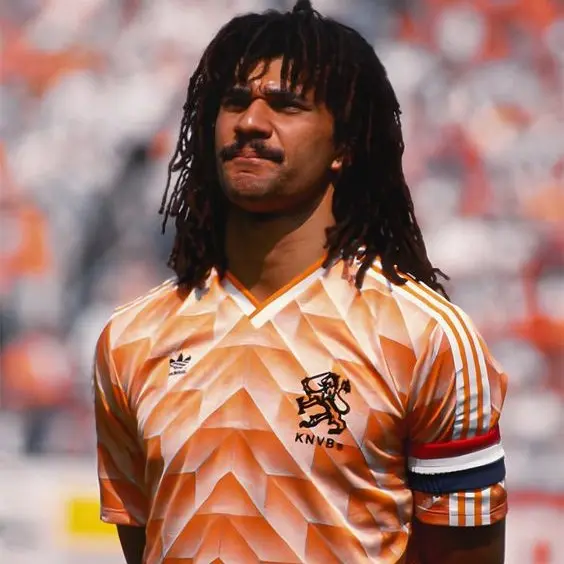
Some people hated it at the time. Yellow zigzags with black stripes? Critics called it gaudy. But ask any Arsenal fan today and you’ll hear nothing but adoration. The Bruised Banana has gone from a polarizing shirt to a pop culture phenomenon.
Why people love it today: Nostalgia, sure, but also a sense of rebellion. In a sea of plain kits, this one stood out, unapologetically. Plus, Arsenal’s return to similar designs in recent years shows how much fans wanted it back.
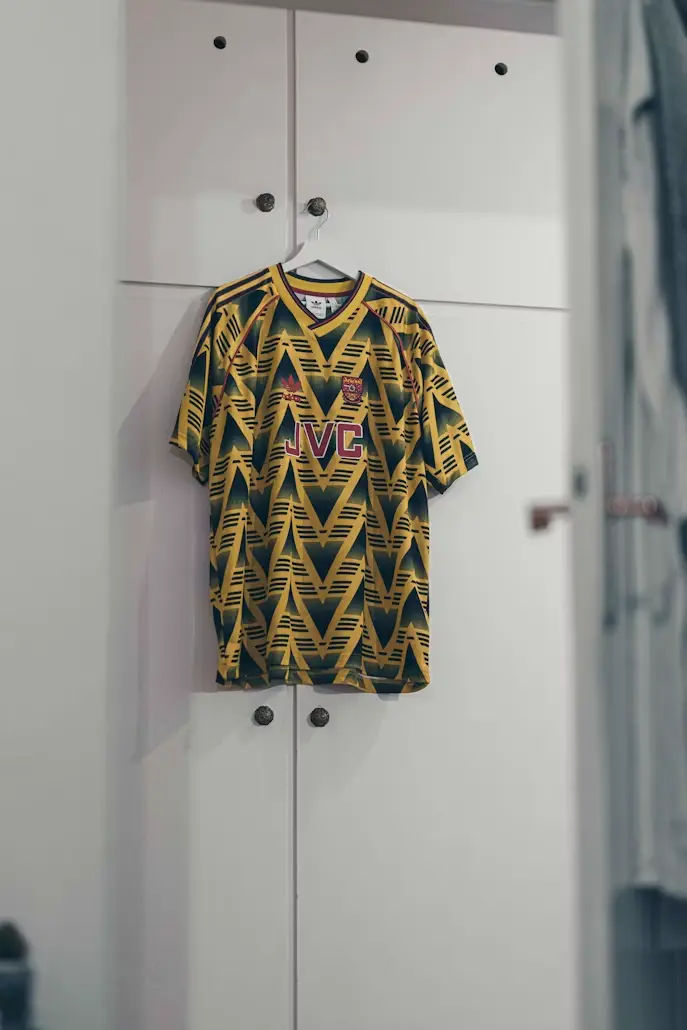
Deep red, white collar, and the Carlsberg sponsor—this was Liverpool’s look through much of the 90s. Simple, clean, but unforgettable.
Why people love it today: It’s tied to a whole generation of Liverpool supporters who grew up in the 90s. For many, this shirt is Liverpool.
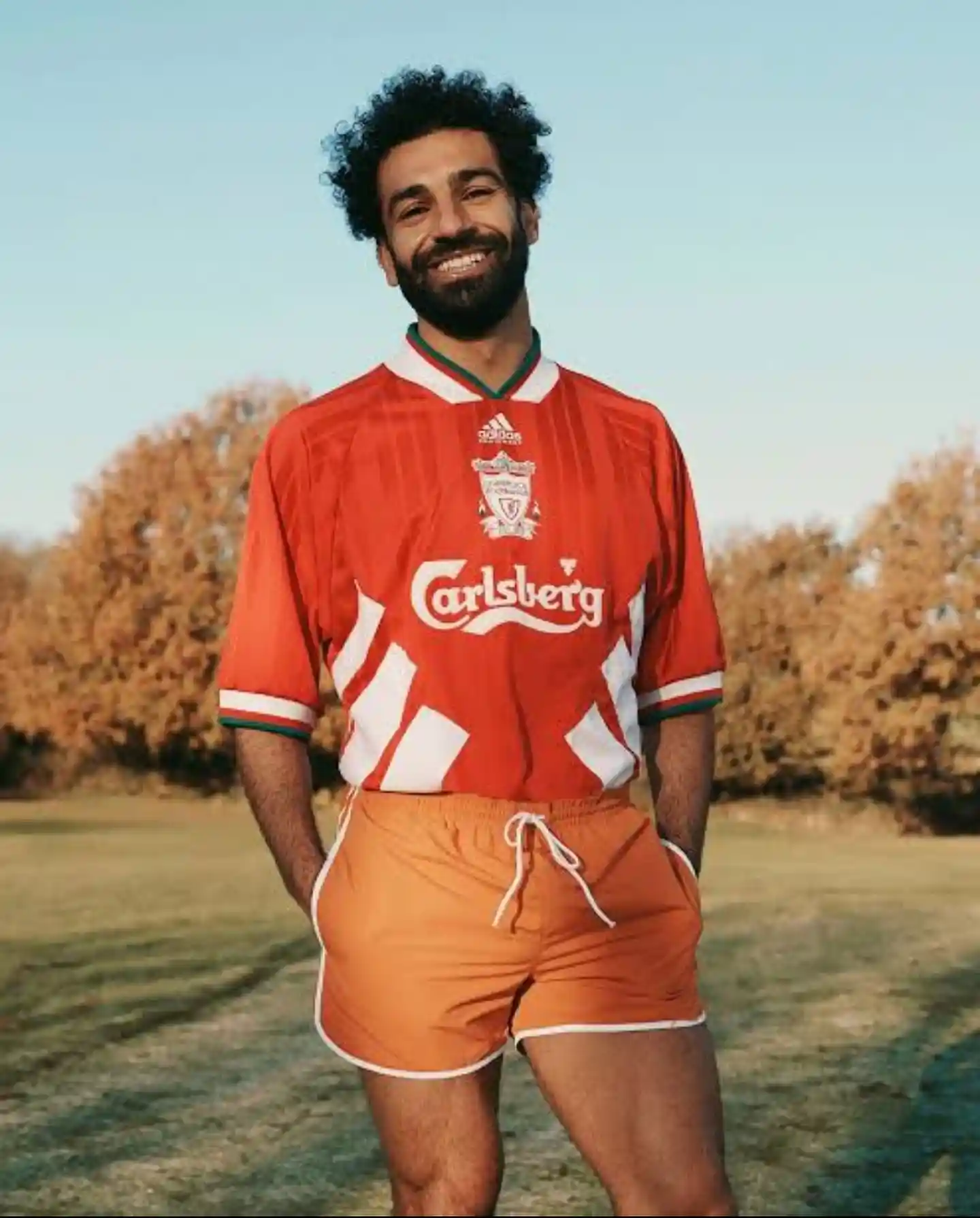
Few shirts carry as much weight as this one. The white base with the sharp black-red-yellow stripe across the chest became iconic after Germany lifted the World Cup in it.
Why people love it today: It’s sleek but bold, and it’s connected to a defining footballing moment. That combination is unbeatable.
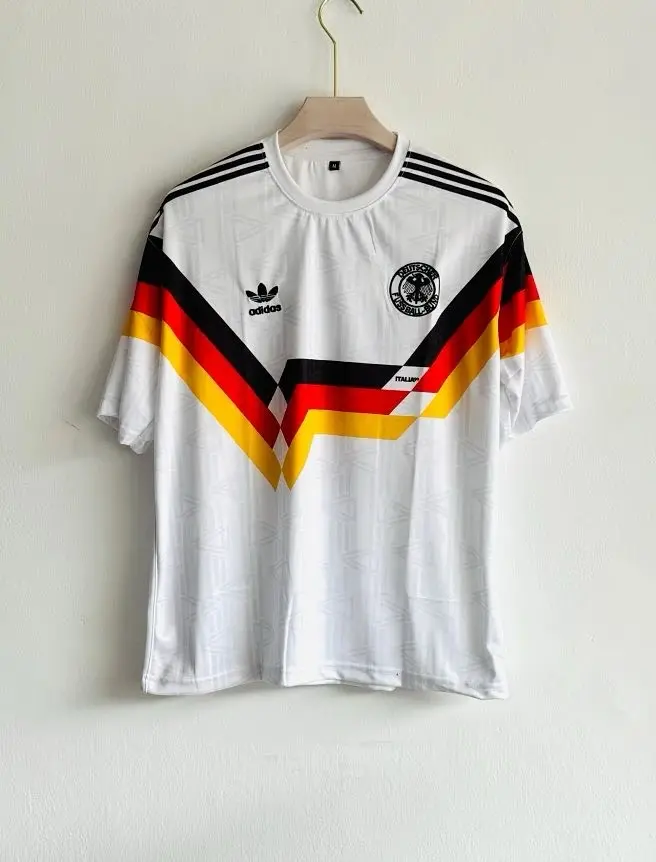
Few kits are tied so closely to a single story as Cameroon’s 1990 World Cup shirt. The deep green home strip, made by Adidas, carried the Indomitable Lions to one of the most unforgettable runs in football history. Led by the evergreen Roger Milla, Cameroon stunned the world by beating Argentina in the opening game and dancing into the quarter-finals—still the best finish for an African nation at that time.
Why people love it today: It represents more than football—it symbolizes pride, belief, and the moment Africa announced itself on the world stage. Collectors hunt for it not just because of the design, but because it tells one of football’s most inspiring stories.

When Denmark turned up at the Mexico ’86 World Cup, people noticed. Not just because of their football, but because of their shirts—half red, half white, with Hummel’s chevrons down the sleeves.
Why people love it today: It was daring, it was fun, and it set Denmark apart. Retro collectors rave about it, and modern remakes sell out quickly.
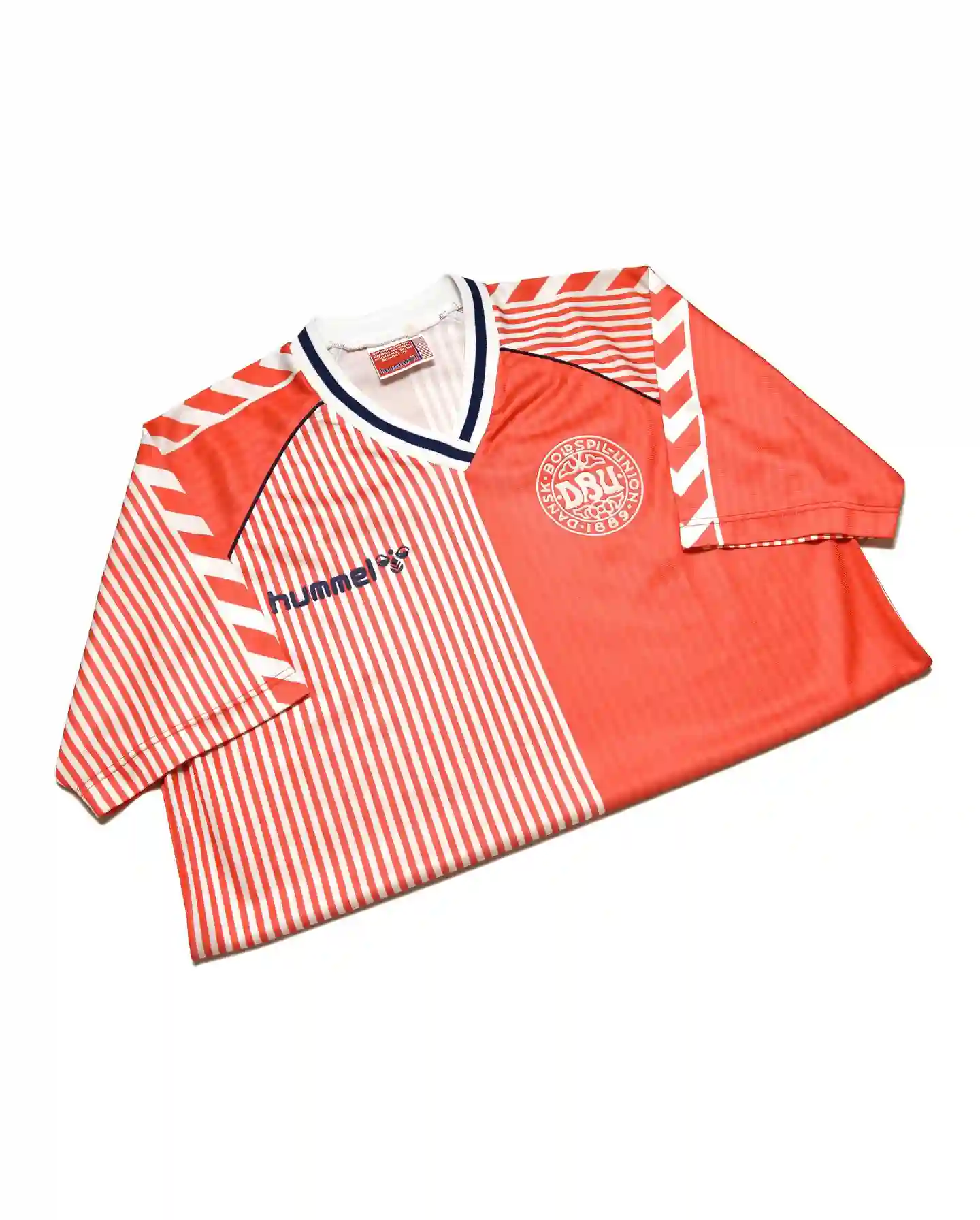
Blue with red and white stripes across the chest, Adidas logo in the center, and of course, the memory of Zidane’s two headers against Brazil.
Why people love it today: This is nostalgia at its finest. For French fans, it’s the shirt of their first World Cup win. For neutrals, it’s just a beautiful design with history baked in.
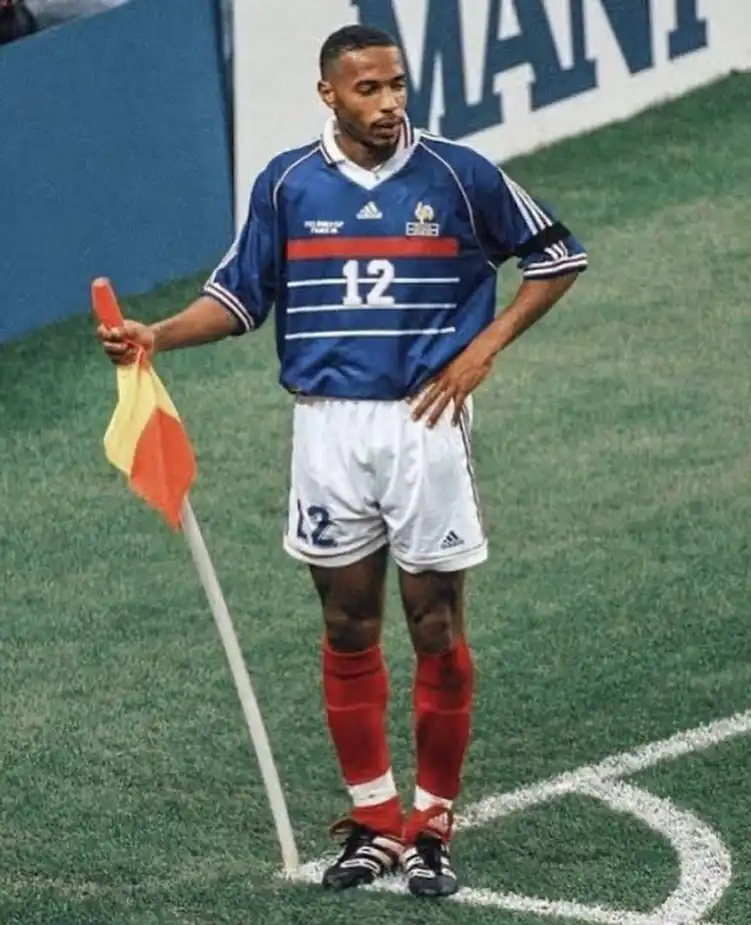
The black and red stripes are always Milan, but the late 80s version, worn by legends like Gullit, Rijkaard, and Van Basten, carries an aura of dominance.
This was a kit worn by some of the fastest and most elegant players of the era. If you're a winger or a striker who values pace, you should check out our guide on the best football boots for speed.
Why people love it today: It represents one of the greatest club sides ever assembled. Owning this shirt is like owning a piece of footballing royalty.
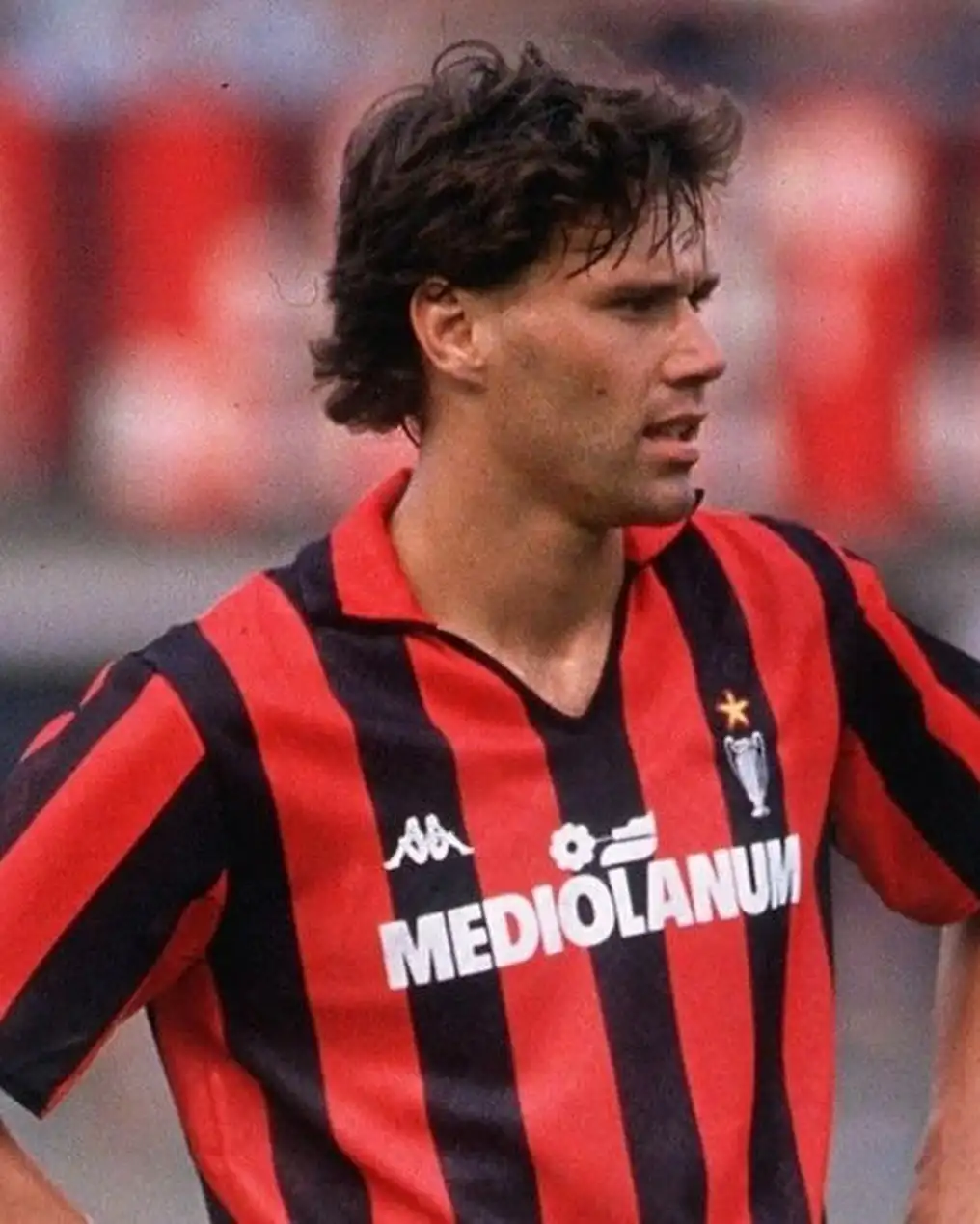
Dark maroon with navy and a proper button-up collar. Worn by the entertainers of the mid-90s under Kevin Keegan.
Why people love it today: It’s stylish in a way football shirts rarely are. Fans still wear it as casual fashion, not just matchday gear.
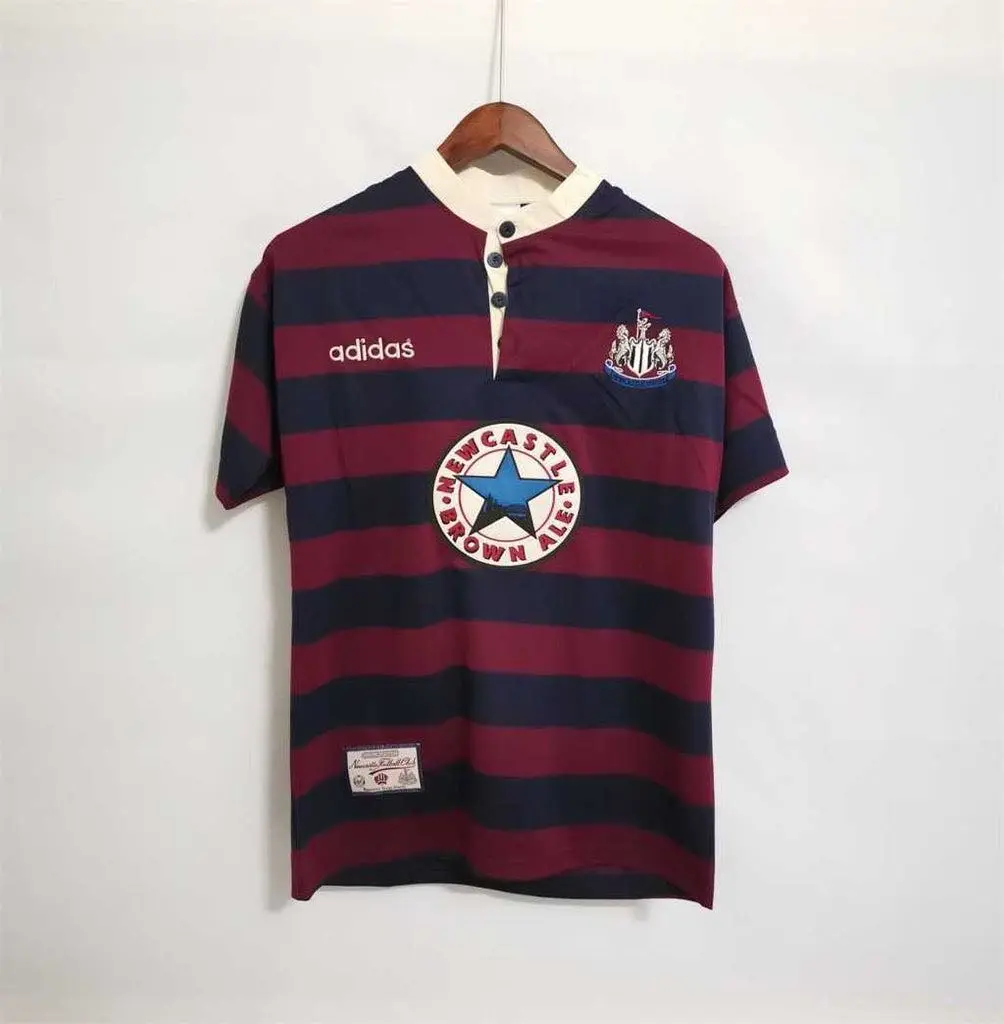
Sky blue, simple, and unforgettable. The Napoli shirt from the late 80s is tied forever to one man: Diego Maradona.
Why people love it today: It’s not just a kit—it’s a shrine. Maradona’s presence elevated this shirt into legend. Retro versions sell worldwide, not just in Naples.
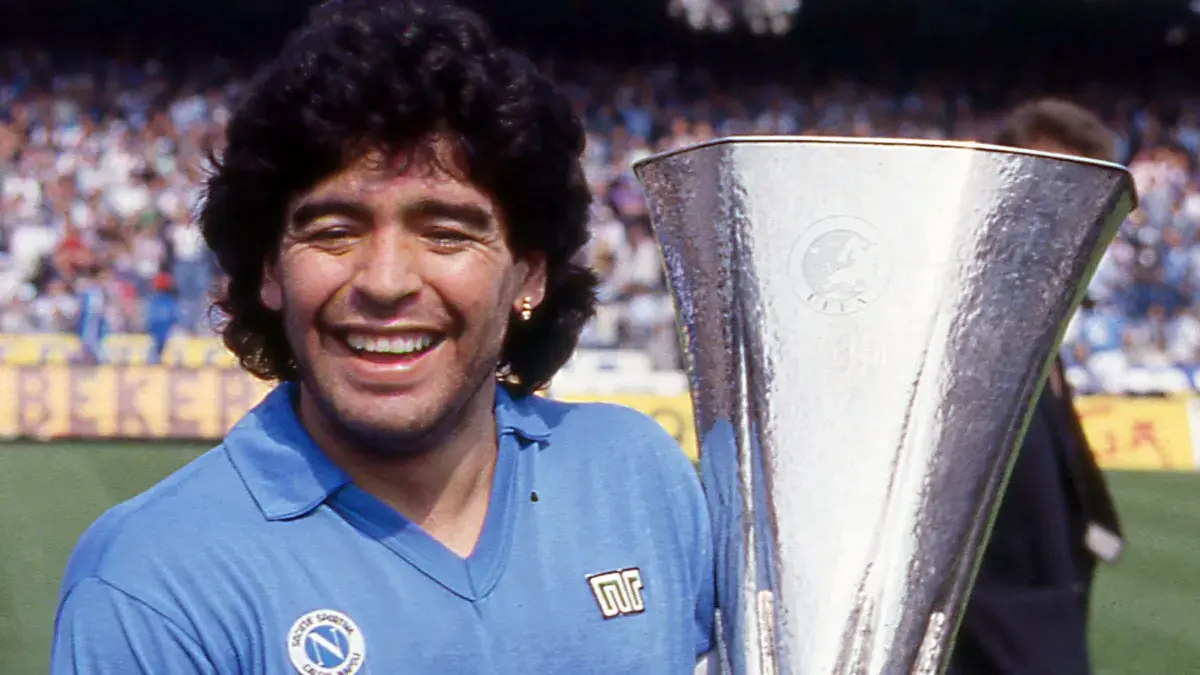
Designed by fashion designer Daniel Hechter, PSG’s red vertical stripe on a blue background, framed by white, became the club’s identity.
Why people love it today: It’s fashion as much as football. The design looks just as sharp on the streets as it does on the pitch, which is why PSG keep bringing it back.
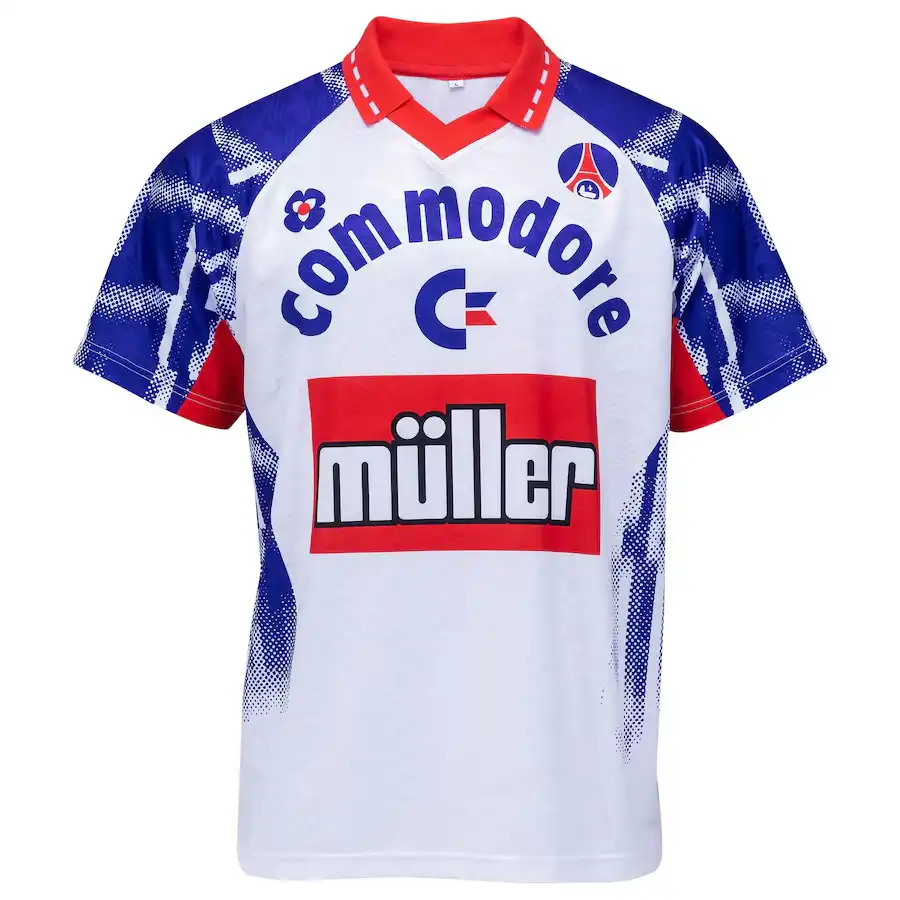
Blue with black spots, almost like a static TV screen. Worn by Cantona and company, it’s one of the more adventurous United designs.
Why people love it today: Because it’s weird, and because Cantona wore it. That’s enough.
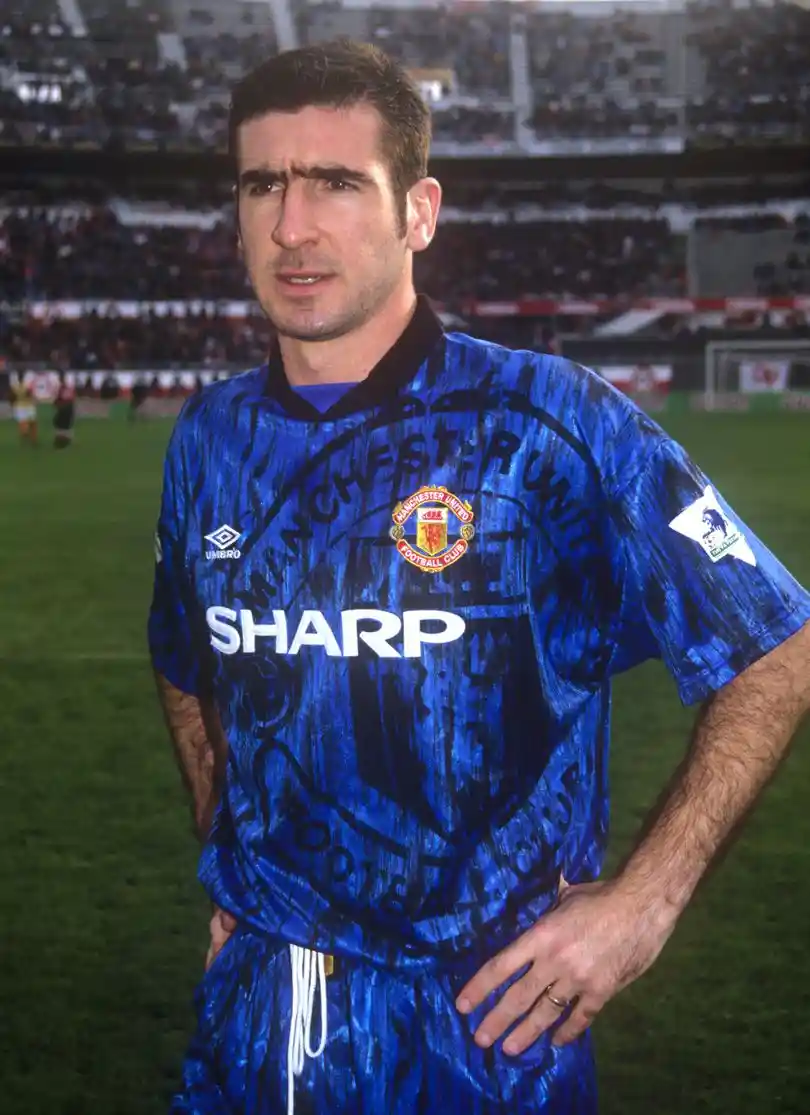
Deep royal blue, subtle detailing, and McEwan’s Lager across the chest. For Rangers fans, this kit symbolizes mid-90s dominance.
Why people love it today: It’s simple yet classy, and it represents a golden era at Ibrox.
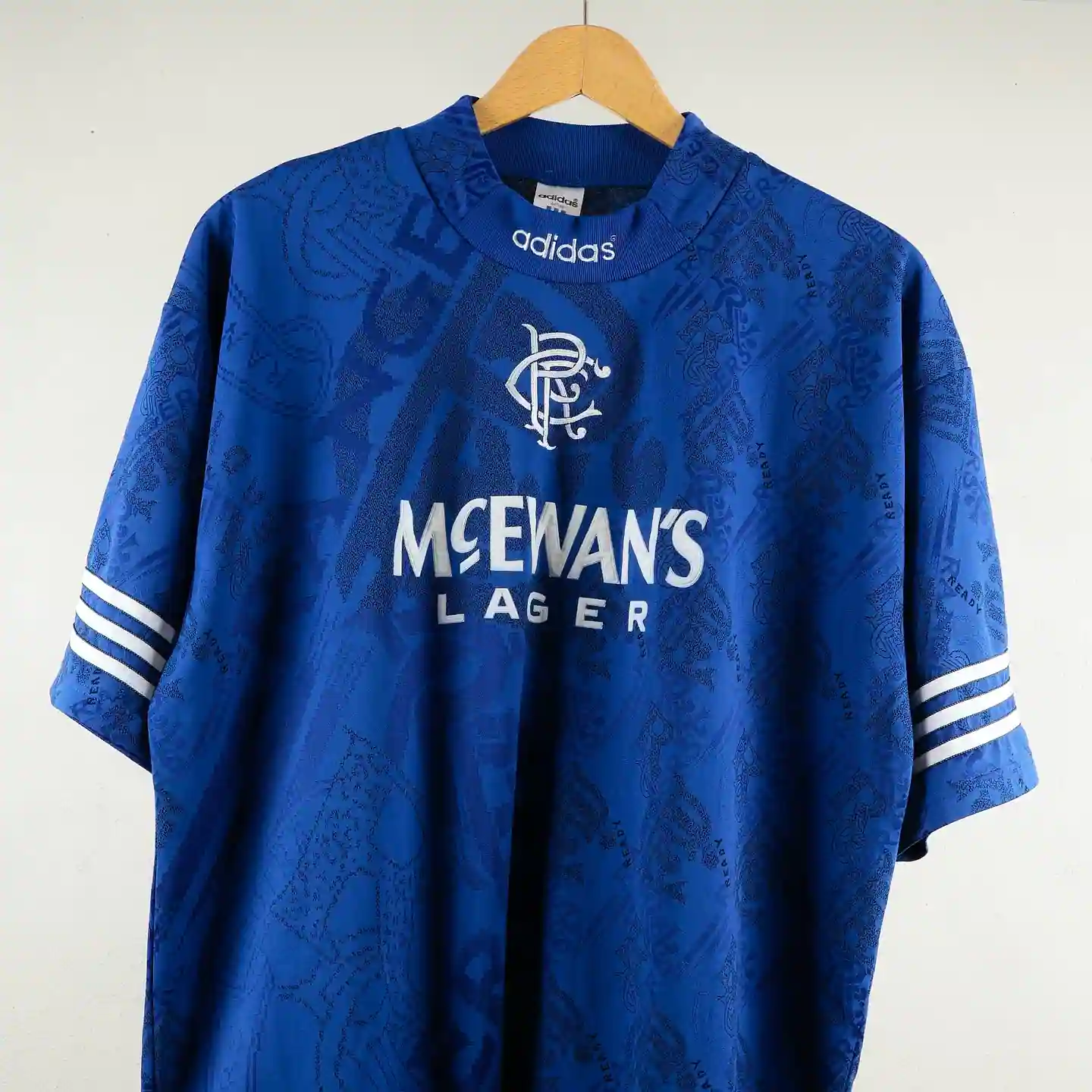
Classic Blaugrana stripes, Kappa logo, and a team that played some of the most beautiful football under Johan Cruyff.
Why people love it today: Because it connects to a philosophy, not just a team. This was the shirt of the Dream Team, and fans treasure it.
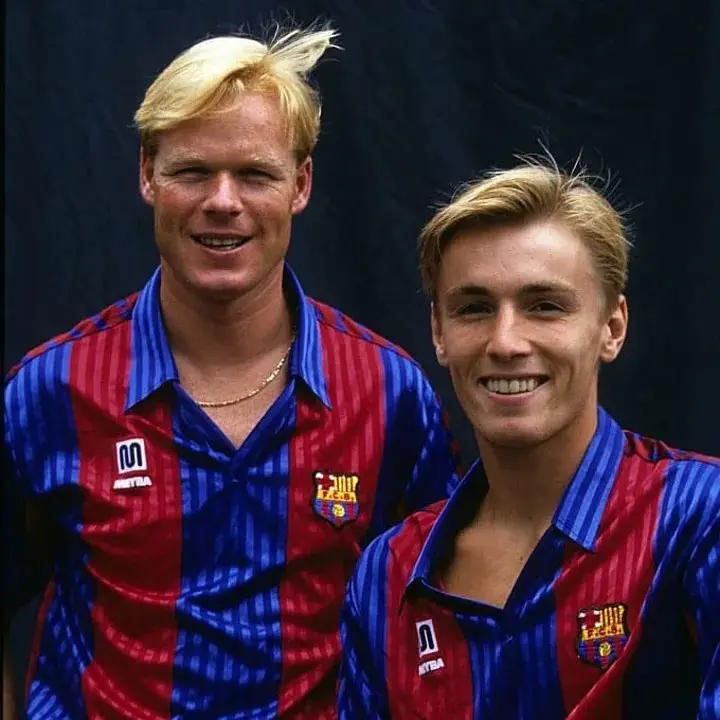
Bright red with bold yellow and green detailing. It looked nothing like anything else at the time.
Why people love it today: It’s a time capsule of Welsh football, and it’s still celebrated as one of the most stylish international kits ever.
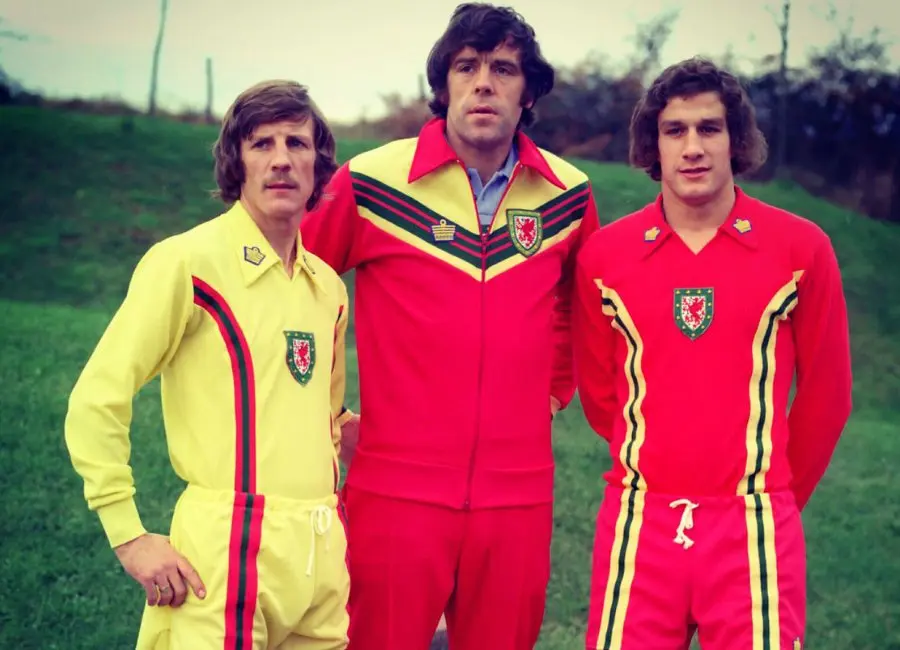
Some shirts almost made the list but missed out—like England’s 1990 home (Gazza’s tears kit), or Croatia’s 1998 checkered classic. But hey, you can’t list them all, right? And if you’re wondering why so many 90s shirts are here, it’s because the 90s were peak experimentation. Designers tried everything, and football fashion was born from that chaos.
With the explosion of interest in retro shirts, the market has also filled with replicas, reprints, and, unfortunately, outright fakes. Some of these are easy to spot, but others can fool even experienced collectors. If you’re thinking of adding a classic to your wardrobe or collection, here’s what to look for:
Original kits almost always have authentic manufacturer labels—Adidas, Umbro, Nike, Kappa, Hummel, etc.—and period-correct fonts. Compare with reference photos from trusted sources like Classic Football Shirts or Cult Kits. If the tag looks modern or the stitching is sloppy, it’s likely fake.
Genuine shirts from the 80s and 90s often used embroidered crests or high-quality stitched patches. Fakes may have printed badges that peel easily. Sponsors are another giveaway—if the print feels cheap, sticky, or has spelling mistakes (yes, it happens), walk away.
Retro shirts from the 70s through early 90s were usually heavier than today’s ultra-light materials. The cut was boxier, not slim-fit. If you’re holding a shirt that feels thin and stretchy like a modern replica, it’s probably not authentic.
A simple but powerful trick: pull up photos of players wearing the shirt in its original era. Does the badge placement match? Are the sleeve stripes correct? Fakes often miss small design details like collar shape or stripe thickness.
If someone’s selling a “brand new, never worn” original 1986 Denmark kit for £40 on eBay—well, you already know the answer. Authentic classics are scarce and usually priced accordingly.
Retro football shirts are proof that football is more than just goals and trophies. They remind us of eras, players, and emotions we’ll never forget. Whether it’s Arsenal’s bruised banana, Liverpool’s 90s Carlsberg classic, or Holland’s orange masterpiece, these shirts live on not only in wardrobes but in our collective imagination.
So next time you see someone wearing a retro kit, stop for a second. Ask yourself what story that shirt is telling. Chances are, it’s not just about football—it’s about who they were when they first fell in love with the game.